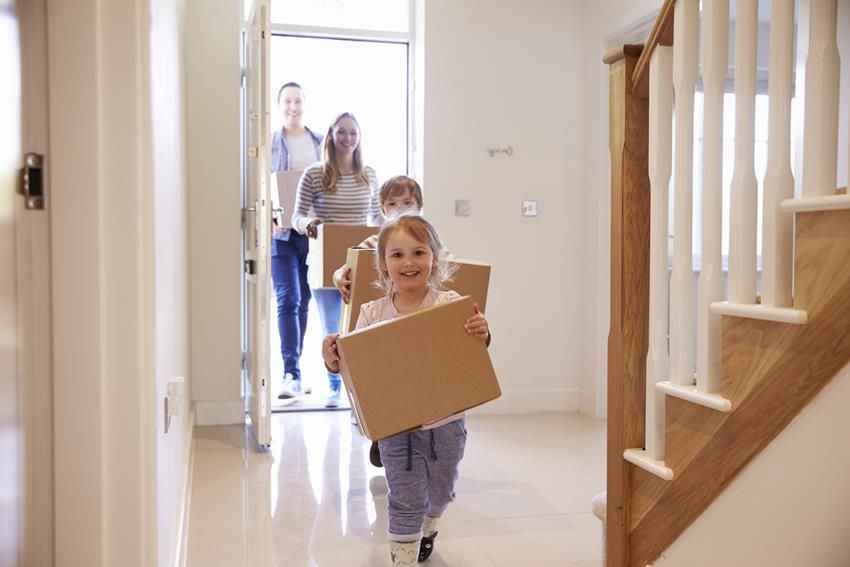How do you organise a move with young children?

Organise support from family and friends
Find someone to look after your children while you and your partner deal with the move. Ask family and friends to help you organise the move. Ask for volunteers to help pack, carry and unload furniture and other items. If you know people who have access to a van or other large vehicle, ask them to help. If not look online for the best removal company. Ask someone to look after your children during the move. This could be a close family member or Friend. Make sure the children will be safe and keep them safe. Ask your friends and family if they could organise activities for the children while you and your partner deal with the move. Ask someone to help you prepare food for the family during the move. Ask your friends and family if someone could bring food or prepare a meal for everyone.
Organise a comfortable place where your children can play and relax, set out their favourite toys, games and books
- choose a comfortable place for the children that is spacious and airy;
- choose a table or desk so children can play, study or draw;
- set up comfortable chairs or poufs so children can sit comfortably;
- place book shelves and toy boxes nearby;
- set out children’s favourite toys, games and books;
- put a rug so children can play comfortably on the floor;
- create, if possible, a comfortable seating area so children can rest after playing.
Plan the move in advance, make a note of the various stages of the move and follow them carefully
- Make a list of the things you want to move. Determine whether you want to hire a removal company or use the help of relatives.
- Check that all documents and important items are secured, packed and ready for transport.
- Set a date and time for the move.
- If you hire a removal company, contact them and arrange the details.
- Decide whether you will need special transport equipment such as lifts, cranes or hoists.
- If you are hiring a removal company, ask about their liability policy for the move.
- If you are using relatives, agree on the details of cooperation and assign roles.
- Prepare all necessary materials such as cardboard boxes, bubble wrap, glue, tape, etc.
- Prepare the premises to which you are moving. Make sure the place is prepared to receive your belongings.
- Prepare all your belongings for the move.
- Agree who will have responsibility for packing and transporting each item.
- Carry out the move.
- after the move, make sure all your belongings have been transported and inspect them to make sure no damage has occurred.
- Give thanks and settle accounts with the removal company or people who helped you with the move.
Schedule breaks where you can check on how your children are feeling during the move
Consider the length of the move, however, basic breaks for children are:
- a morning meal before you start the move;
- regular breaks as often as possible to get outside, be amongst nature and breathe in fresh air;
- a lunch break so that your children can eat and relax;
- a rest break in the afternoon, when your children will have time to relax and play;
- a dinner break;
- evening entertainment to help your children relax after the move and get a peaceful night’s sleep.
Buy the children some snacks so they have something to eat during the move
Containers or snack pouches will work well. Here are some examples for snacks, of course choose them according to your child’s preferences:
- water, juices;
- Fruit (fresh or dried);
- vegetables and dips;
- corn crisps;
- sandwiches;
- biscuits, muffins, muffins;
- cabanas;
- jelly beans.
Set up toys in the new flat that will make the children feel at home there as soon as possible
- a set of building blocks;
- plastic toys such as dolls, cars and animal figures;
- creative toy sets to make, such as puzzles, constructions, colouring books and colouring books;
- interactive toys such as tablets, games consoles or educational robots;
- creative kits such as magnetic blocks, plasticine and creative battery-powered toys;
- toys that promote physical activity, such as bikes, scooters, balls, rollerblades and other outdoor toys;
- toys for younger children, such as educational toys, puzzles and board games.
Prepare overnight cuddly toys for children to make them feel safe in their new place
- a teddy bear or other cuddly toy;
- a small pillow with their favourite fairy tale character;
- a sleeping bag or blanket
- a book to read before going to sleep.
